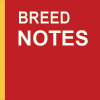
ONE HUNDRED and fifty years ago this weekend on June 28th & 29th 1859 the first dog show took place in Newcastle upon Tyne at the Corn Exchange. The show preceded that of the first National Dog Show by some four months and was organised by Messrs John Shorthose, a brewer's agent and William Rochester Pape, a Tyneside shotgun manufacturer.
 Pape's business was the only gun manufacturer between Birmingham and Edinburgh and not only did he supply guns to the Japanese during the Sino-Japanese war he only took premier honours at the London Gun Trials in 1858, 1859, 1866 and 1875. That this first show took place at all was a testimony to the gentry of the day wishing to formalise and in a small way regulate the dog fanciers desire to compare dogs at a 'public show' instead of the matches and challenges which took place in the back street public houses.
Pape's business was the only gun manufacturer between Birmingham and Edinburgh and not only did he supply guns to the Japanese during the Sino-Japanese war he only took premier honours at the London Gun Trials in 1858, 1859, 1866 and 1875. That this first show took place at all was a testimony to the gentry of the day wishing to formalise and in a small way regulate the dog fanciers desire to compare dogs at a 'public show' instead of the matches and challenges which took place in the back street public houses.
The show was held in conjunction with a poultry show which attracted a large public gate. Just as Charles Cruft started his shows in 1886 to promote the sale of dog biscuits, Pape saw the chance to bring together potential customers for his shotguns so the classes at the show were restricted to setters and pointers which in those far off days were by far the most popular of breeds used by the leisured Victorian upper class as they pursued game on the moors of northern England and Scotland. William Pape also bred black pointers and his great granddaughter, the late Miss Patricia Pape, bred and showed Golden Retrievers under the Abbotsford prefix for 30 years until the late 1990s. She was president of the Golden Retriever Club of Northumberland and was also Chairman of the Ashington CS.
Mr Shorthose by contrast made his money as a brewer's agent for Bass's beer which saw great demand in the mid-19th century. Originally based in Burton-on-Trent at the brewery town which is still famous for its products today, he moved to the north-east in 1851 to promote Bass's beer. He lived at Hartford Bridge, near Blyth, where he bred poultry and had extensive kennels for his working Irish and English Setters.
No bitches
The first dog show was just that - a DOG show with no bitches allowed and all the exhibitors were men. This was a throwback to the days when matches and challenges were held in seedy public houses of the big cities where 'proper ladies' were never seen. The pointer classes featured 36 dogs, no overseas pointer breeds, and the 23 setters of all varieties were together in one class. Mr J. Laycock, the then Mayor of Newcastle, entered two pointers at the show.
The judges were listed in catalogue as - SETTERS: F. Foulger, R. Brailsford, and J. H. Walsh Editor of The Field. POINTERS: J. Jobling, T. Robson and J. H. Walsh.
Winner of the setter class was a Gordon by the name of Dandy, owned by J. Brailsford, which was believed to be from the famous strain bred by the dukes of Gordon. The pointer winner was Wm Jobling from Morpeth whose brother was one of the judges! The relationship between judge R. Brailsford and setter winner J. Brailsford is unclear but one thing that is certain is that gamekeeper R. Brailsford was a primer mover in the organisation of the National Dog Show Society's event in the October of 1859. The winners took home a 'celebrated Pape D/B shot gun value £15 - £20'.
The first ever show drew its entries from the north of England and the Borders and the catalogue, a single sheet of paper, noted that the show would make a loss of £15. Whether there was an entry fee is unclear. What is clear from the archives is that both Pape and Shorthose were businessmen of great vision, both of whom spread their portfolios into property in the city of Newcastle which at the time had a rapidly expanding boundary to accommodate a population of 110,000.
What followed was the formation of the Kennel Club in 1873, the establishment of the Stud Book which for many years was compiled at the offices of the The Field in Stratton Street, W1, and the regulation of dogs shows and the registration system we have today.
Meanwhile in the 1880s in Blackburn, Lancashire one Theo Marples, son of a methodist minister from Derbyshire, gained an interest in dogs and dog shows. He wrote various columns on matters canine for stockkeeping, poultry and sporting magazines. His interest culminating in the formation of a directorate to back the publication of OUR DOGS in January 1895.
The rest, as they say, is history.
Send your opinion of this story below
(All opinion is fully moderated. Your comment will be uploaded once it has been moderated.)












